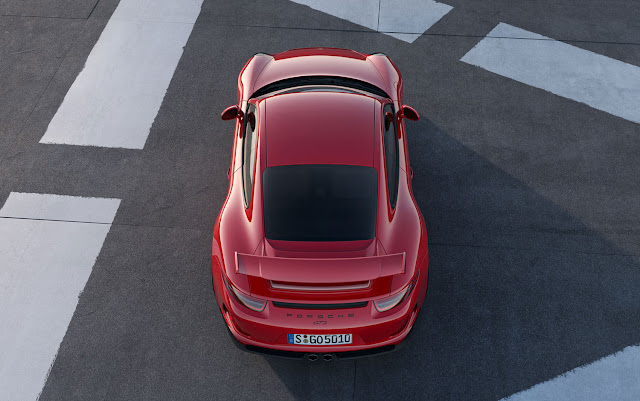Why the 2014 Porsche 911 GT3 Doesn’t Have a Manual Transmission – 2013 Geneva After one of the fastest press conferences in auto show history, I spoke with Porsche representative Holger Eckhardt about the 2014 GT3. The car was unveiled at VW’s Group Night roughly 14 hours before its official Geneva Motor Show debut, so today’s event was more about showing the GT3 sitting next to the new GT3 Cup Car than an actual unveiling. The comparison between the two cars might answer enthusiasts biggest question about this new car.
Why the 2014 Porsche 911 GT3 Doesn’t Have a Manual Transmission – 2013 Geneva
Why the 2014 Porsche 911 GT3 Doesn’t Have a Manual Transmission – 2013 Geneva
 |
| Why the 2014 Porsche 911 GT3 Doesn’t Have a Manual Transmission – 2013 Geneva |
Why the 2014 Porsche 911 GT3 Doesn’t Have a Manual Transmission – 2013 Geneva
2014 Porsche 911 GT3 front 300x187 image“As early as the 996 GT3 talks had already begun about why the GT3 was still using a manual gearbox when better, faster technology existed,” Eckhardt said. It has been decades since top-level racecars have used a traditional manual transmission so a PDK does seem like the natural step. Some will argue that the GT3 should be Porsche’s driver’s car, but according to Matthias Muller, Porsche AG’s CEO, the GT3 is the ultimate distillation of Porsche’s DNA, which obviously focuses on GT Racing as much as road cars. The GT3 should be the ultimate transfer of race car to road car.
The new GT3 has a 470-hp 3.8-liter flat-six mated to a seven-speed dual-clutch transmission. Acceleration from 0-60 mph is said to take 3.5 seconds, though we expect the car to outperform that estimate in Motor Trend testing. For the full rundown on the 2014 911 GT3, read our First Look here.
2014 Porsche 911 GT3 inteiror 300x187 imageAccording to Eckhardt, the active rear-wheel steering technology is not something that comes from Porsche Racing. The first time we saw the active all-wheel steering was on the 918, although development originally started with the 991 turbo in mind. The technology was so promising that it not only made its way onto the supercar, but onto the GT3 as well. The restrictiveness of racing governing bodies has stopped active rear-wheel steering’s development on competition cars.
Production of the GT3 will begin in June, with U.S. deliveries starting in November. It sounds as though work has already begun on the RS version, with hints being given we might see it one year from now, on the very same stage.
For all the latest news, photos, videos, and much more direct from the 2013 Geneva Motor Show floor, don’t forget to CLICK OVER to our 2013 Geneva show coverage page.
The new GT3 has a 470-hp 3.8-liter flat-six mated to a seven-speed dual-clutch transmission. Acceleration from 0-60 mph is said to take 3.5 seconds, though we expect the car to outperform that estimate in Motor Trend testing. For the full rundown on the 2014 911 GT3, read our First Look here.
2014 Porsche 911 GT3 inteiror 300x187 imageAccording to Eckhardt, the active rear-wheel steering technology is not something that comes from Porsche Racing. The first time we saw the active all-wheel steering was on the 918, although development originally started with the 991 turbo in mind. The technology was so promising that it not only made its way onto the supercar, but onto the GT3 as well. The restrictiveness of racing governing bodies has stopped active rear-wheel steering’s development on competition cars.
Production of the GT3 will begin in June, with U.S. deliveries starting in November. It sounds as though work has already begun on the RS version, with hints being given we might see it one year from now, on the very same stage.
For all the latest news, photos, videos, and much more direct from the 2013 Geneva Motor Show floor, don’t forget to CLICK OVER to our 2013 Geneva show coverage page.
















































